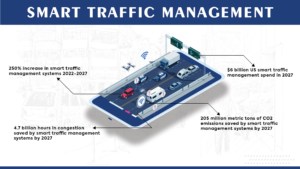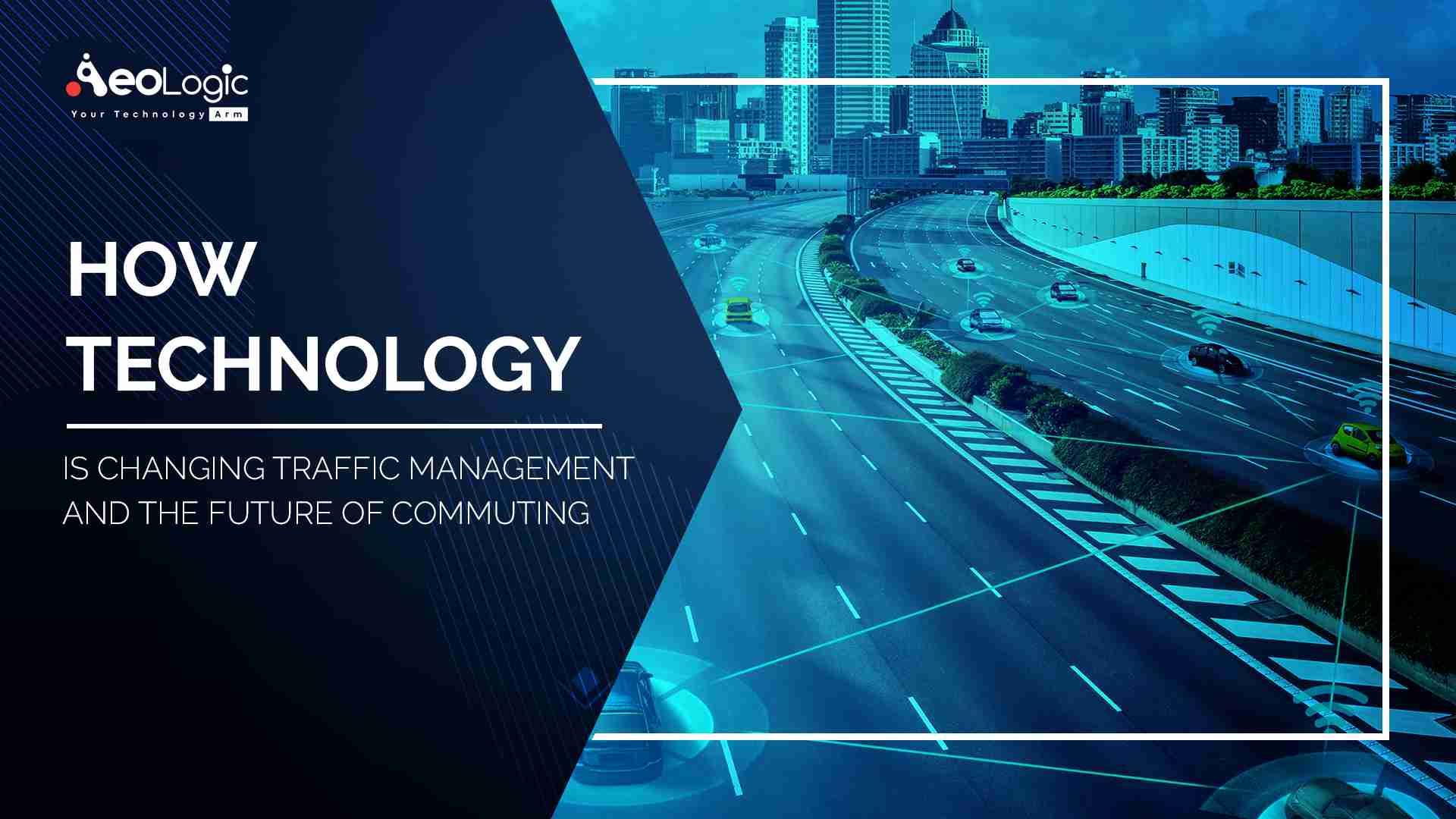Heavy traffic and road congestion are a new normal these days. Traffic congestion on road networks means slower speeds, longer travel times, and more vehicles queuing. Cities are expanding beyond their carrying capacities and adding new roads and related infrastructure is beyond the scope of these sprawling cities. Although traffic congestion can never be completely eliminated, it can be managed to reduce delays, maintain speeds, and improve travel time reliability.
In such a situation, technology plays a pivotal role in managing road and traffic systems with optimum resources available which makes our life smooth. On the other hand, to alleviate traffic congestion on the roads, a combination of information and communication technologies is used to manage traffic. The technology-enabled traffic management is termed a “Smart Traffic Management System”.
Also read: Technology And Intelligent Transportation Systems
Smart Traffic Management System (STMS)
Smart Traffic Management is a system in which centralized traffic signals and sensors regulate traffic flow through the metropolitan area in response to demand. And the overarching objective of STMS is to control everyday congestion, reduce road accidents, monitor and control speeds, enforcement of traffic rules and regulations, and reduce vehicular pollution as well.

STMS are automated systems that make use of the most recent advances in the Internet of Things (IoT) technology, such as sensors, cameras, networking equipment, and wireless applications. IoT systems can optimize traffic flow and improve safety by dynamically adjusting control mechanisms such as traffic lights, expressway on-ramp meters, efficient public transport lanes, highway message boards, and also speed limits.
Benefits of STMS
- Regular monitoring and enforcement: A driver who has been speeding, running red lights, and driving in the wrong direction will be detected by a smart traffic management system. The license plate has been read, and an automatic fine will be sent to the concerned person.
- Smart and efficient city infrastructure: Technological advancement in traffic management has made our cities smart. One of the objectives of the “Smart Cities Mission” of India is to provide sustainable solutions to traffic management through data-driven technology management.
- Detection and decongestion of heavy traffic: A smart traffic management system can automatically alleviate unexpected congestion by adjusting the timing of traffic lights in response to different nearby traffic. Also, STMS frequently uses a traffic management center to monitor and coordinate a large network of sensors and is discovering novel ways to reduce traffic congestion and improve urban mobility. Moreover, with the automated mechanism, response time can be reduced, and getting the injured treated quickly can mean the difference between life and death.
- Re-routing in case of emergency: Companies also want to clear the roads for ambulances and police cars so that there is no traffic waiting for them when they arrive. The ultimate goal of the traffic management system is to create a connected cooperative and automated transport, and mission-critical communication is quite simple to handle with technology.
Also read: The Rise Of AI In The Transportation Industry
Conclusion
Smart cities all over the world are implementing smart traffic management techniques to increase the efficacy of their road network, with highly efficient, protected, and reliable information and communication solutions that can help roads and highways carry more traffic in a safer manner.
To summarize, unlike in any other industry, technology is revolutionizing traffic management, making it more productive, efficient, and effective for everyone on the planet. Having a smart traffic management system in an emergency not only fulfills a societal responsibility, but it also simplifies complex traffic management processes.
Are you looking to implement a smart traffic management system? If yes so please feel free to contact us at support@aeologic.com
FAQs
How technology is helping to reduce traffic problems?
Since IoT systems can help in optimize traffic flow and enhance safety by dynamically adjusting control mechanisms such as traffic lights, expressway on-ramp meters, highway message boards, efficient public transport lanes, and also speed limits
What are the advanced techniques in traffic management?
A highway traffic management system (HTMS)/advanced traffic management system (ATMS) includes a set of intelligently integrated roadside equipment that are linked to ensure a safe and secure journey, including smooth traffic movement and timely reaction to unfortunate incidents.

Manoj Kumar is a seasoned Digital Marketing Manager and passionate Tech Blogger with deep expertise in SEO, AI trends, and emerging digital technologies. He writes about innovative solutions that drive growth and transformation across industry.
Featured on – YOURSTORY | TECHSLING | ELEARNINGINDUSTRY | DATASCIENCECENTRAL | TIMESOFINDIA | MEDIUM | DATAFLOQ









